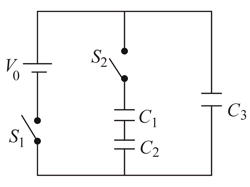A capacitance of is required in an electrical circuit across a potential difference of . A large number of capacitors are available which can withstand a potential difference of not more than . The minimum number of capacitors required to achieve this is

Important Questions on Capacitor and Capacitance
A capacitor is charged as shown in the figure. The percentage of its stored energy dissipated after the switch is turned to a position is

In the given circuit, a charge of is given to the upper plate of the capacitor. Then in the steady state, the charge on the upper plate of the capacitor is
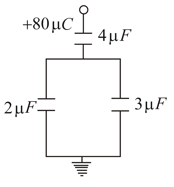
A parallel plate capacitor having plates of area and plate separation , has capacitance , in air. When two dielectrics of different relative permittivity ( and ) are introduced between the two plates as shown in the figure, the capacitance becomes . The ratio is
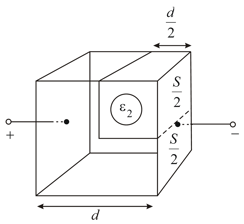
In the circuit shown in the figure, there are two parallel plate capacitors each of capacitance . The switch is pressed first to fully charge the capacitor and then released. The switch is then pressed to charge the capacitor After some time, is released and then is pressed. After some time,
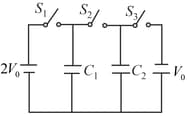
A parallel plate capacitor has a dielectric slab of dielectric constant between its plates that covers of the area of its plates, as shown in the figure. The total capacitance of the capacitor is while that of the portion with dielectric in between is When the capacitor is charged, the plate area covered by the dielectric gets charge and the rest of the area gets charge The electric field in the dielectric is and that in the other portion is Choose the correct option/ options, ignoring edge effects.
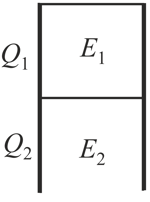
Three identical capacitors and have a capacitance of each and they are initially uncharged. They are connected in a circuit as shown in the figure and is then completely filled with a dielectric material of relative permittivity . The cell electromotive force (emf) is, . First, the switch is closed while the switch is kept open. When the capacitor is fully charged, is opened and is closed simultaneously. When all the capacitors reach equilibrium, the charge on is found to be . The value of is,
